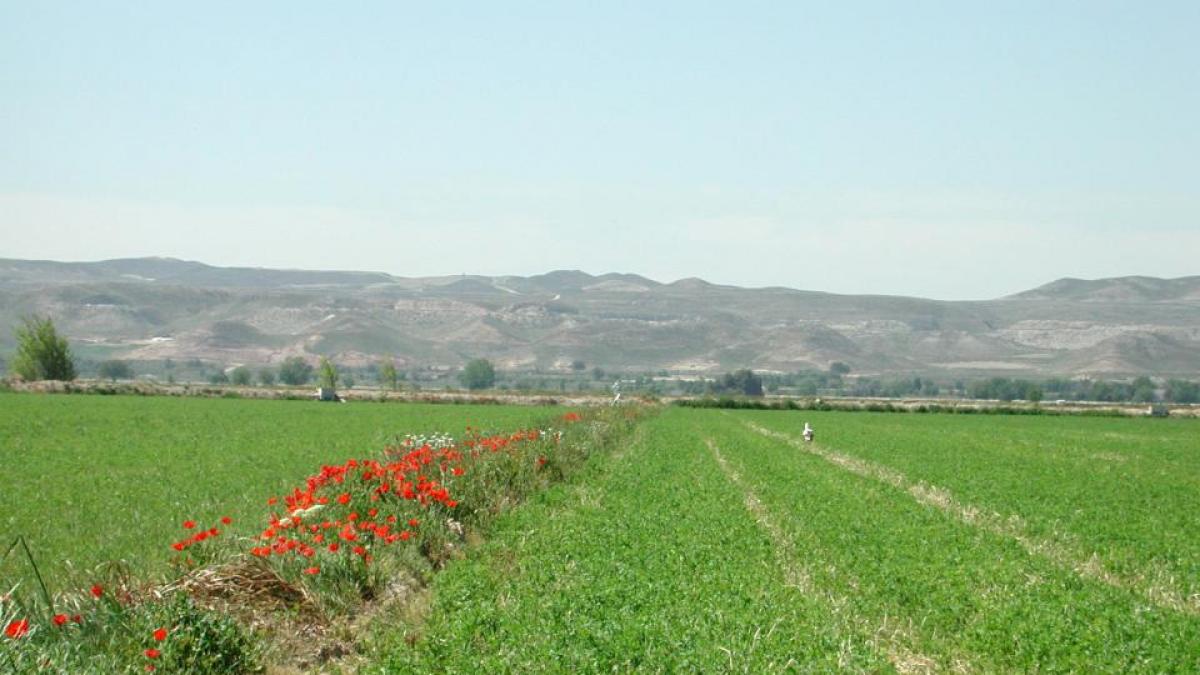A total of seven researchers from various centers and organizations in Aragon have participated in the development of the Integrated Alfalfa Pest Management Guide published by the Ministry of Agriculture, Fisheries and Food (MAPA). Aragonese participation accounts for more than a third of the total, which is a reflection of the importance of this type of crop in the Community, where it is one of the most relevant, both in production and in the field of research.
From the coordination, carried out by Eva Nunez, researcher at the Center for Agrifood Research and Technology of Aragón (CITA), and by Elena Rodríguez, from the Cariñena Regional Office for Agro-environmental Affairs, up to the authorship of a good part of the files it contains, in which Eva Núñez has participated, in the arthropod pest cards; Vicente González, in those of diseases caused by fungi; and Fernando Escriu, in those of viruses. Researchers from other organizations have also collaborated in the guide as authors or consultants, such as Miguel Cambra, Pedro Zuriaga and Agustín Perdiguer, from the Center for Health and Certification of the Government of Aragon.
Greater sustainability
The objective of this type of guide is, in addition to making known the type of pests that affect crops, that of “implement crop management in the most sustainable way possible, minimizing fungicide inputs and only using the authorized phytosanitary products at any given time “, explains Vicente González, researcher at the CITA Plant Protection Unit.
All this is oriented from the perspective of Integrated Pest Management, an approach that, although it allows the use of chemical fungicides, seeks to prioritize other management and control systems, such as crop rotation, the use of resistant seeds, rational fertilization or biological control.
Integrated Pest Management has several advantages, including the saving of chemical inputs, and if they are used, the guarantee that those that are less toxic will be used. “This also prevents the microbiological depletion of the soil”, adds the researcher from the Center for Agrifood Research and Technology. “However,” he points out, “from the Plant Protection units we work to promote sustainable practices for the management, maintenance and planning of the agricultural landscape.”
The guides are designed to address farmers, as well as technicians from the Agrupaciones de Tratamientos Integrados en Agricultura (ATRIAs), marketers and also the phytosanitary sector. “Before publication, they are agreed with all the agents of the sector throughout the country”González remarks.
Alfalfa in Aragon
Arthropods, fungi or some vertebrates such as voles are the main groups of pests that affect this type of crop, although, explains Vicente González, “in each area they have their own problems.” In the case of Aragon, some arthropods such as the green worm and some diseases caused by fungi are the most frequent, as a consequence of the temperature and humidity conditions, the latter accentuated by the fogs that occur in the Ebro Valley. “Many of them are endemic and, in general, except for some sporadic affections, do not require drastic measures such as lifting the crop “.
Aragon represents 60% of the alfalfa cultivation area in the country as a whole. In 2018, almost two-thirds of the national production, to which Aragon contributed around 750,000 tons, was destined for export, mainly to the United Arab Emirates and China.
– .


